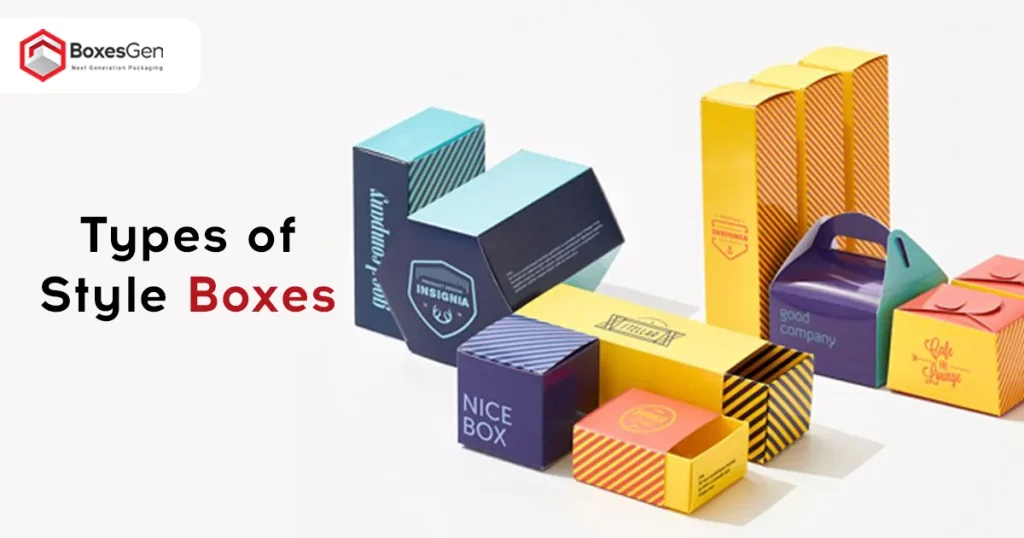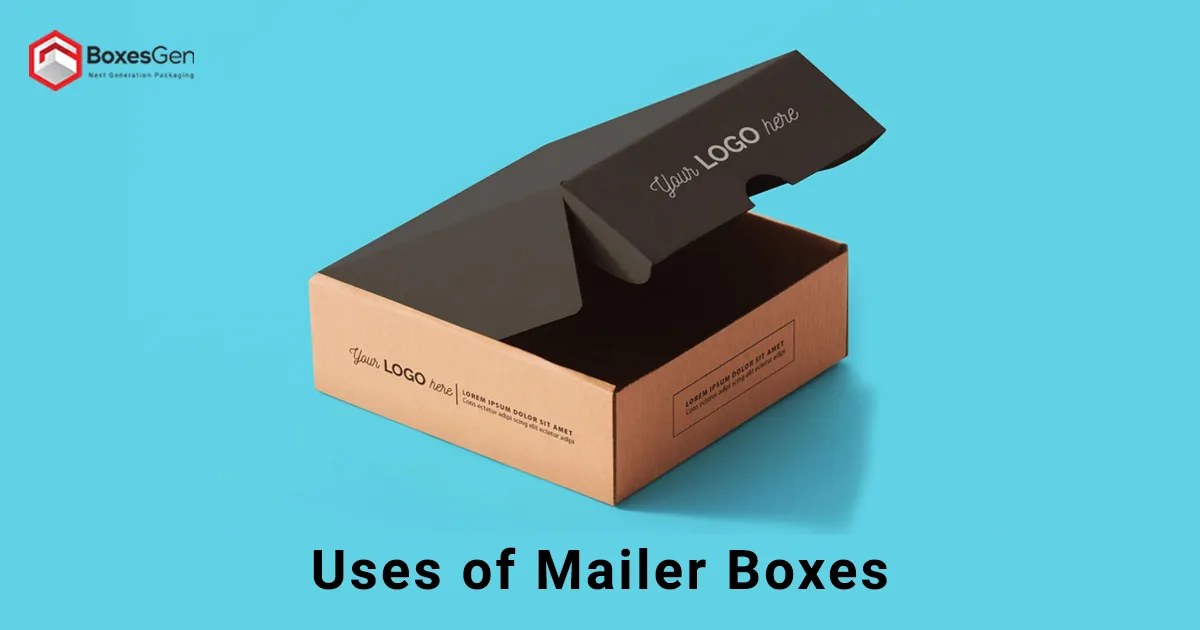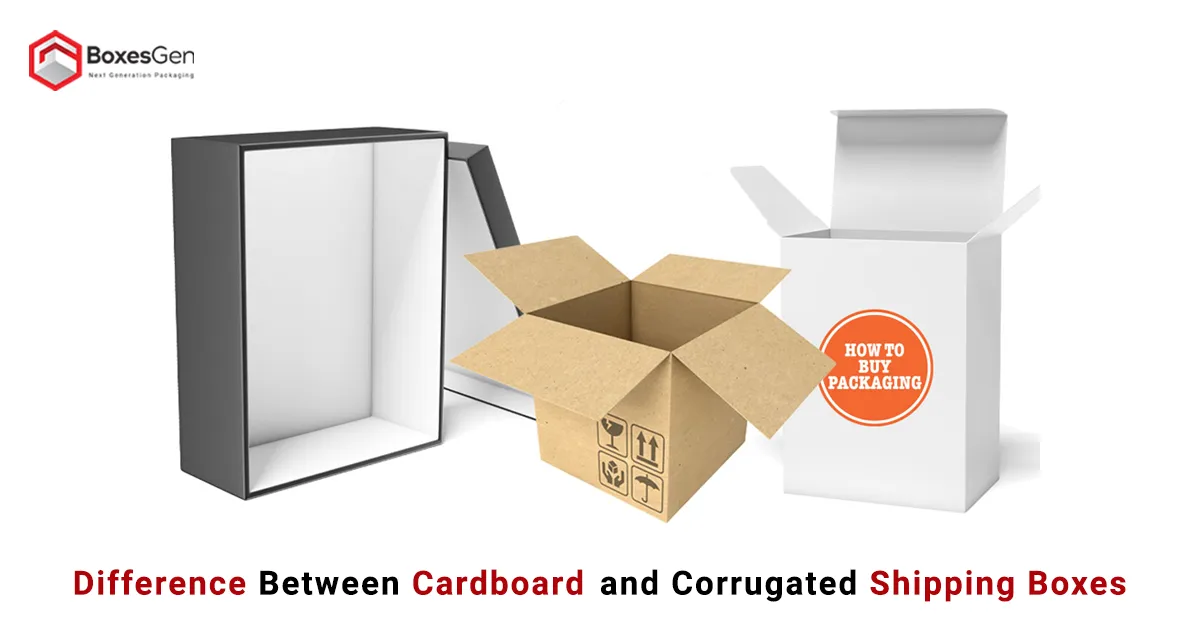Types of Style Boxes
The packaging industry has evolved significantly, and one of the key players in this transformation is the style box. These versatile containers come in various forms, each designed to cater to specific needs and industries. In this article, we will explore the intricate industry of style boxes, exploring the nuances of their types and applications.
Rigid Boxes
Rigid boxes, known for their sturdiness and upscale appeal, are a popular choice for luxury items. Crafted from high-quality materials like chipboard or paperboard, these custom boxes exude sophistication and offer excellent protection to the enclosed products. Their robust structure makes them ideal for items that require an extra layer of security during transportation or storage.
Cartons
Cartons, a broad category encompassing various styles, are widely used in packaging. These boxes, made from different materials such as paperboard or corrugated cardboard, are adaptable to diverse products. Whether it is food, electronics, or cosmetics, cartons provide a customizable and Cost-effective Packaging Solution.
Corrugated Boxes
Corrugated Boxes, featuring a wavy layer between two flat layers, are revered for their strength and durability. These corrugated boxes come in various styles, with slotted boxes being a common choice. Slotted boxes are easy to assemble, making them efficient for packing and shipping. Corrugated boxes find extensive use in industries requiring robust packaging, such as e-commerce and logistics.
Cosmetic Box
Cosmetic Boxes are a specialized category designed to showcase and protect beauty products. These cosmetic boxes often incorporate innovative packaging designs, such as magnetic closures or foam inserts, to improve the presentation of cosmetics. The aesthetic appeal of cosmetic boxes aligns with the premium nature of beauty and skincare products.
Double Cover Box
Double cover boxes, as the name suggests, feature two covers that provide added protection and a unique opening experience. These boxes are commonly used for premium items where the packaging itself is part of the product experience. The double cover design not only improves security but also adds a touch of luxury to the overall presentation.
Folding Boxes
Folding Boxes are characterized by their ability to collapse for convenient storage. This style is popular for products that may need to be assembled by the end-user. One piece folders, a subset of Cosmetic Foldable Boxes, are particularly efficient in terms of simplicity and ease of use. These boxes are often used for items like small electronics, pharmaceuticals, and hardware.
Paperboard Boxes
Paperboard boxes are crafted from a dense paper material, offering a lightweight yet sturdy packaging solution. These boxes are commonly used for items like cereal, crackers, and other dry goods. The versatility of paperboard allows for various printing and Premium Finishing Options, making it an excellent choice for product branding.
Reverse Tuck Box
Reverse tuck boxes are designed with flaps that tuck in the opposite direction, creating an interesting opening experience. This style is often used for small consumer goods, pharmaceuticals, and cosmetic items. The reverse tuck design augments the security of the packaging while providing a unique element to the unboxing process.
Stitch Fix
Stitch Fix, a renowned online personal styling service, utilizes a distinct packaging style. Their boxes are designed to reflect the brand’s commitment to personalized fashion. The use of custom printing, vibrant colors, and practical design ensures that the packaging aligns with the customer’s expectation of a curated and tailored experience.
Acrylic Boxes
Acrylic boxes offer a sleek and transparent packaging solution. These boxes are often used for high-end products where visibility and aesthetics are crucial. The transparency of acrylic allows consumers to view the enclosed product, creating a sense of anticipation and exclusivity.
Crash Bottom Box
Crash bottom boxes, also known as auto-lock bottom boxes, are designed for quick and easy assembly. The crash-lock feature ensures stability at the bottom, making them suitable for heavier items. This style is commonly employed in industries such as Food Packaging, where efficiency and strength are paramount.
Display Boxes
Display boxes are crafted to showcase products attractively on shelves or countertops. These display boxes often come with a clear window, allowing customers to see the product without opening the packaging. Display Boxes are widely used in retail environments, where visual appeal plays a crucial role in attracting consumers.
Drawer Box Style
Drawer boxes, characterized by their sliding design, provide a unique and elegant unboxing experience. These boxes are often used for premium items such as jewelry, watches, or high-end electronics. The sliding mechanism adds an element of sophistication and allows for easy access to the enclosed product.
Full Overlap Boxes
Full overlap boxes are designed with flaps that completely overlap, providing maximum protection to the enclosed items. This style is commonly used for heavy or fragile products that require extra security during transportation. Full overlap boxes are prevalent in industries such as automotive and manufacturing.
Hinged Lid Box
Hinged lid boxes feature a lid that is attached to the base, creating a seamless opening experience. This style is often used for premium packaging, Gift Boxes, or items where easy access is essential. Hinged lid boxes can be customized with various materials, finishes, and closure mechanisms to suit specific product requirements.
Mailers
Mailers, designed for efficient shipping, come in various styles such as straight tuck boxes and reverse tuck boxes. These Mailer Boxes are lightweight, easy to assemble, and provide a secure enclosure for products during transit. Mailers are commonly used in e-commerce, subscription services, and direct-to-consumer businesses.
Straight Tuck Boxes
Straight tuck boxes are characterized by straight flaps that tuck into the box. This simple yet effective design is versatile and commonly used for a wide range of products. Tuck Top Mailer Boxes are efficient in terms of assembly and provide a clean and professional look, making them a popular choice for Retail Packaging.
Conclusion
The world of style boxes is diverse and dynamic, catering to a wide range of industries and consumer preferences. From the elegance of Rigid Boxes to the practicality of mailers, each style serves a unique purpose in improving the packaging and presentation of products. As e-commerce and direct-to-consumer models continue to thrive, the importance of thoughtful and strategic packaging design becomes increasingly evident. Whether it is a luxurious cosmetic box or a practical mailer, the right style box can raise the overall brand experience and leave a lasting impression on the consumer.
Frequently Asked Questions of Types of Style Boxes
How Many Types of Boxes Are There?
There are various types of boxes, including corrugated boxes, rigid boxes, folding cartons, and more, each designed for specific purposes and industries.
What Is the Most Common Box Style?
The Regular Slotted Container (RSC) is the most common box style. It is widely used due to its simplicity, cost-effectiveness, and ease of assembly.
What Is an RSC Style Box?
An RSC box is a type of corrugated cardboard box with four flaps that meet at the center when folded, forming a sturdy and reliable packaging solution.
What Is the Difference Between HSC and RSC Boxes?
The Half-Slotted Container (HSC) lacks one set of flaps, making it suitable for top-loading. In contrast, the Regular Slotted Container (RSC) has flaps on both the top and bottom for added security.
What Are Box Shapes?
Box shapes vary, including rectangular, square, cylindrical, and custom shapes tailored to specific products, providing diverse options for packaging solutions.
What Are the Four Functions of Boxes?
Boxes serve four main functions: containment, protection, convenience, and promotion, ensuring products are safely stored, transported, and marketed effectively.
What Are Boxes Called?
Boxes are commonly referred to by various names, such as cartons, containers, packages, or simply boxes, depending on regional preferences and industry terminology.
What Are The 3 Measurements of a Box?
Boxes are measured by length, width, and height. These dimensions help determine the size and shape of the box needed for a particular product or application.
How Do I Choose a Box?
Choosing the right box involves considering the size, weight, fragility, and shipping requirements of the product, ensuring a proper fit and adequate protection during transit.
What Is Boxes Packaging?
Boxes packaging involves using containers, like corrugated boxes, to enclose and protect products during storage, handling, and transportation, safeguarding items from damage or deterioration.
What Is the Most Common Box Size?
The most common box size is 12 x 12 x 12 inches, widely used for shipping and storing various items due to its versatility and ease of handling.
What Are Big Boxes Called?
Big boxes are often referred to as “cartons” or “containers,” accommodating larger or bulkier items during storage, transport, or shipment.
What Is a Box Used for?
Boxes serve as containers for protecting, storing, and transporting diverse items, ensuring their safety and organization in various contexts, from moving to product packaging.
What Are the Different Types of Packing Cartons?
Packing cartons come in various types, including corrugated boxes, folding cartons, rigid boxes, and mailers, each designed for specific packaging needs and materials.
What Are the Five Best Styles for Packaging?
The five best packaging styles include RSC (Regular Slotted Container), HSC (Half-Slotted Container), Mailer Boxes, Two-Piece Boxes, and Tuck Top Snap Lock Bottom Boxes, offering versatility and adaptability for different products and industries.








